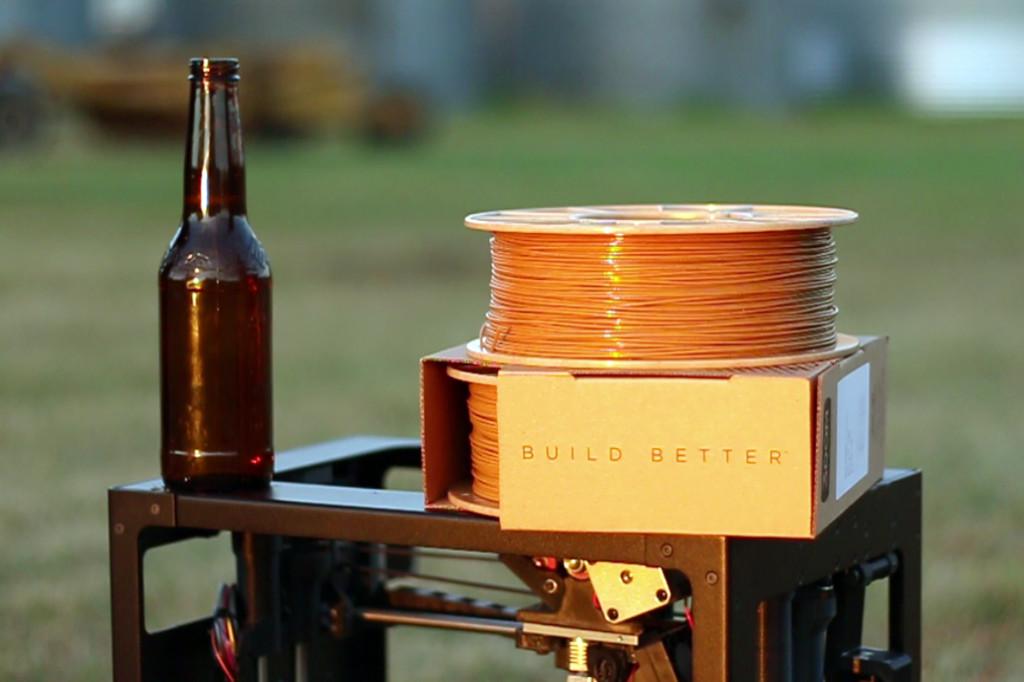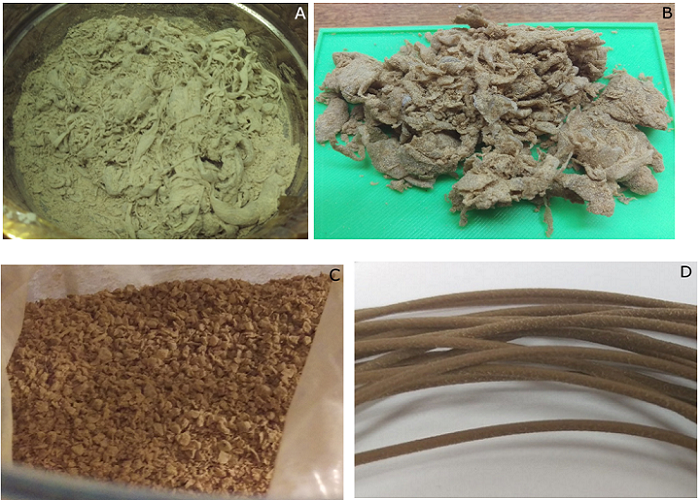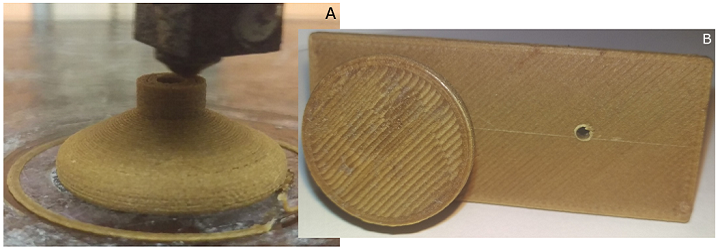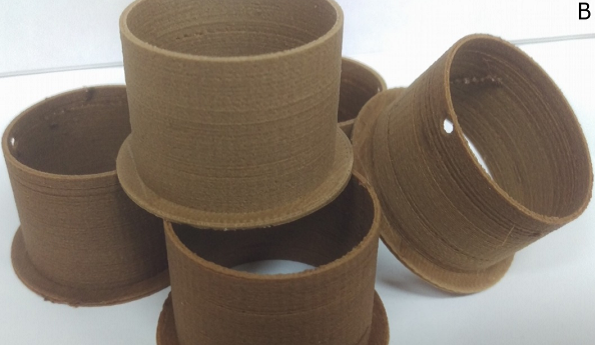In trying to prevent the total collapse of our natural ecosystem, we can work toward building a circular ecosystem of goods production and consumption. The goal of a circular economy is to produce no waste and have no negative impact on our ecosystem.
At the moment, we have very minor hints at a circular economy in the additive manufacturing (AM) space in the form of recycled feedstock and feedstock recyclers.
Recycled Feedstock
On the market, it is already possible to purchase 3D printing filament from a number of brands, including Innofil3D (now a BASF company), 3D Fuel and others. These companies manufacture filaments made from waste products. While ABS is recycled from car parts, PET is recycled from plastic bottles and HIPS can be scavenged from old refrigerators.
3D Fuel is one of the more notable companies in the space due to the wide range of waste-based plastic it manufactures. This includes waste byproducts from the beer, cotton and coffee industries, as well as biochar derived from the pyrolysis of landfill waste. All of these materials are then combined with NatureWorks PLA to give second lives to what would otherwise rot in giant piles somewhere.
Because many desktop 3D printing filaments are meant for low-cost machines, it might be safe to say that this helps offset the waste produced for prototyping and visual modeling. In general, 3D printing is still used for these applications, even as a shift toward production is taking place. As the technology is deployed for end part manufacturing, however, it is important to understand the reusability of materials in production systems.
HP, for instance, offers several materials that are 70 to 80 percent reusable. In powder bed fusion technologies, not all unprinted powder from a build can be reused due to exposure to the sintering/fusing source. In the case of HP’s materials, that amount is limited to just 20 to 30 percent.
Feedstock Recyclers
The aforementioned materials are obviously a small fraction of the possibilities for manufacturing with recycled feedstocks. A step further is the use of material recyclers that can be used to shred used plastic and remelt it into new, usable filament. Those with access to extrusion 3D printers can build recyclers like Michigan Tech’s RecycleBot at home or purchase a system like the Filabot or Felfil Evo.
There are good arguments to be had about whether or not such a system could even exist in industrialized society because of the destructive nature of recycling. Waste that is recycled can only be put through such a process a given number of times before its quality is too low for continued re-use. According to research from the Michigan Technical University Open Sustainability Technology (MOST) group, recycled plastic filament can only last five recycling cycles before it becomes unusable.
However, the MOST group is trying to overcome these issues. The lab is working to improve the quality of recycled plastic feedstock by replacing a plastic filament extruder with a hopper for processing shredded plastic. The research demonstrated that recycled ABS, PET and PP had similar tensile strength to virgin plastic filaments. PLA, however, was 2.5 percent weaker.
Circular Economy
If we were able to maintain quality throughout recycling, we can imagine how 3D printing could become a manufacturing process of choice for a circular economy. In a form of what the MOST lab refers to as “industrial symbiosis,” waste byproducts from one production site could be used as the material feedstock for another.
While other manufacturing technologies might be deployed in such a scenario, 3D printing has the advantage of producing less material waste than subtractive technologies such as CNC machining. It also has the benefit of cost effectively fabricating objects on-demand, eliminating the need for warehousing extra goods made with mass manufacturing technologies like injection molding.

An eco-industrial park centered on a photovoltaic manufacturing plant. Image courtesy of Renewable Energy.
The MOST group detailed the possibilities of a symbiotic eco-industrial park used to manufacture solar panels in a study. The calculations suggested that raw material use could be cut by 30,000 tons annually and embodied energy use could be cut by 220,000 GJ annually.
For the journal sustainability, a team of UK researchers attempted to conceive of a way to incorporate a number of emerging technologies, including AM, into a circular economic model. Using the production of shoes as an example, the team illustrated the production of shoes in a circular economy in this way:
“The design of this pair of trainers allows new disruptive business models, such as offering trainers as a service through a subscription model. This model provides a personalized service if the trainers need to be repaired, maintained, or parts need to be replaced, as the main body detaches from the sole with a mechanical joint. In addition, trainers will be produced in local stores. The model also includes the use of other technologies such as the ability to scan your foot to produce every trainer to measure and an augmented reality application to virtually try the trainers on. These technologies will allow the custom production of trainers avoiding a surplus of unsold products and utilizing the minimal amount of material.”
This second example in particular (as opposed to the solar park envisioned by the MOST lab) suffers from a lack of imagination, in that it attempts to maintain our current global society as much as possible. Our current economic, social and technological order are what have generated all of the ecological crises we are facing in the first place.
If we are to maintain a society with any level of industrialization that we currently have, it may be necessary to avoid thinking in terms of individual “consumers” purchasing goods as they always have, albeit locally and with a subscription model, and begin thinking about what aspects of this industrial society are necessary and which are merely convenient.
The post Climate Disrupted: A Circular Economy appeared first on 3DPrint.com | The Voice of 3D Printing / Additive Manufacturing.







